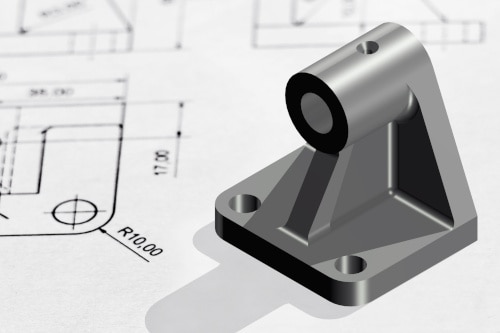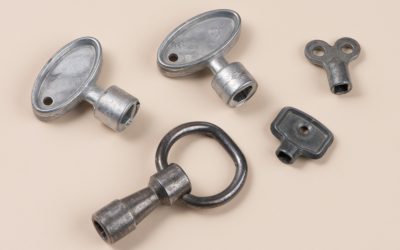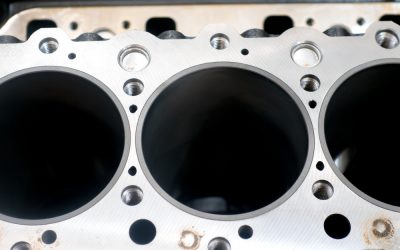Choosing the primary material for your project is a vital decision, and you should weigh the options carefully. But with so many choices, looking for the ideal material can become overwhelming.
If you are in the process of designing a metal product, steel and aluminum have likely crossed your mind as possible metals to use. This is of no surprise since they are the two most widely produced metals in the world.
This article compares some of the basic properties of steel and aluminum and mentions some typical applications for each.
Table of Contents
Aluminum vs. Steel: Factors to Consider

While there are many different steel and aluminum alloys, each with its specific properties, there are some key differences between the two metals. This section compares some of the most important physical characteristics of steel and aluminum.
Weight
If you ask someone which metal is lighter, most people will correctly say aluminum. Steel’s high strength comes at the cost of a much higher density. In fact, for two pieces of equal volume, steel can be as much as three times the weight of aluminum.
Strength
Strength is often one of the first properties considered when selecting a material, especially in high-stress applications. Generally speaking, steel is stronger than aluminum. That said, once the lighter weight of aluminum is factored into the equation, aluminum comes out on top with a superior strength-to-weight ratio.
Identifying which metal has the better strength for your application will depend on your design’s flexibility. For example, a larger aluminum part may offer more strength at a lower weight than the steel alternative.
Malleability
Another downside of steel’s high strength is that it is harder to work it into different shapes than aluminum, especially if the shape is complex. This can be somewhat overcome by heating the steel to very high temperatures, but this adds cost and can compromise other properties. On the other hand, aluminum is relatively easy to form while either cold or hot and is ideally suited for manufacturing processes such as extrusion and rolling.
Thermal Conductivity
Aluminum is generally a much better thermal conductor than steel and is often used in applications where heat dissipation or distribution is required, such as in heat sinks.
Corrosion Resistance
Plain carbon steel has poor corrosion resistance. It rusts easily and will continue to corrode if exposed to the elements. Aluminum, on the other hand, forms a protective oxide layer on its surface that acts as an inert barrier against further oxidation. So long as the aluminum isn’t exposed to an environment that causes it to break down, it will continue to provide excellent corrosion resistance.
It’s worth noting that steel can be made highly resistant to corrosion if a minimum of 11% chromium is included in its alloying elements, making it “stainless steel.” Stainless steel, however, is more costly than plain carbon steel, and other physical properties of the steel may be affected.
Cost
The cost of the material will naturally be a significant factor in which you choose for your project. Since the price of both of these metals will fluctuate with the market and the specific alloy, it is hard to say that one will be cheaper than the other in every context. However, it is commonly accepted that, pound for pound, carbon steel is generally less expensive than a comparable aluminum alloy.
Physical Properties Comparison
The following table compares specific values for the physical properties of steel and aluminum. For this purpose, we’ve compared a medium carbon steel and general aluminum alloy.
| Property | Medium Carbon Steel | General Aluminum Alloy |
|---|---|---|
| Density | 7.75 – 7.89 g/cc | 0.0160 – 3.63 g/cc |
| Yield Tensile Strength | 245 – 1740 MPa | 1.24 – 730 MPa |
| Corrosion Resistance | Bad | Good to Excellent |
| Thermal Conductivity | 21.9 – 52.0 W/m-K | 1.48 – 255 W/m-K |
| Malleability | Moderate to Good | Good to Excellent |
Applications for Aluminum and Steel

When trying to choose between steel and aluminum for your specific project, knowing the common areas of application for each of them could be very helpful. The following table shows the most common uses of these metals in different industries.
| Industry | Steel | Aluminum |
|---|---|---|
| Infrastructure | • Steel reinforcement in concrete structures, such as bridges and parkade • Steel supports and girders |
• Architectural and finishing applications, such as side paneling • Window and door frames, gutters, and railing |
| Mechanical equipment | • Tractors, bulldozers, and cranes • Rolling mills • Hand tools like hammers and shovels |
• Piping • Some storage tanks |
| Transportation | • Car frames • Drive trains • Suspensions |
• Aircraft fuselage, wings, and support structure • Car body and wheels • Car engines |
| Appliances | • Washers and dryers • Ovens |
• Appliance bodies and frames • Coffee makers and mixers |
| Sports Equipment | • Rock climbing equipment • Golf club heads • Cycling chains, cogs, and cables • Weightlifting equipment |
• Bicycle frames, wheels, and handlebars • Ski poles • Baseball bats |
Should You Choose Steel or Aluminum for Your Project?
Whether to choose steel or aluminum for your project will ultimately depend on your project’s characteristics, the forming process, and your budget. For example, if strength and durability are the most important attributes for your design, and the shape is not too complex, perhaps a steel alloy is the better option. On the other hand, if you need a good strength-to-weight ratio, corrosion resistance, and the ability to form a unique shape, aluminum is probably the better choice.
If you want to know more about some of the most widely used aluminum alloys, take a look at some of our other articles below:
If you’d like to learn more about the most common aluminum fabrication processes, see the following:
➨ Which Aluminum Fabrication Process is Best for Your Project?



